Narrative Elements Teaching Resources
Are you teaching narrative elements and looking for worksheets and activities to get students excited about tone, narration, plot and a host of other elements to writing a great story? Wondering how to engage primary students on the concept of character traits and make plot development as exciting as recess?
The English teachers on the Teach Starter team have done just that with a collection of printable worksheets and digital activities built around this core reading standard. Aligned with the Australian English curriculum, each narrative elements activity in this collection has undergone a careful review by a member of our teacher team to ensure it's ready for your lesson plans and your students.
Explore our teacher team's guide to learn more about the various narrative elements and how to bring them to life in your classroom!
Is this your first year teaching about these story elements? Or the first year in a while? Our teacher team has put together a quick refresher to get you ready to rock and roll in the classroom, including a way to explain what narrative elements are.
What Are Narrative Elements? A Kid-Friendly Definition
First thing's first: Let's talk about the definition.
Narrative elements are the basic components of writing that the author uses to share the story with the reader. Without them, the narrative falls apart!
They are sometimes referred to as story elements or literary elements. No matter what you call them, these elements give a piece of writing structure and help the author convey information to the reader.
On the reading side, literary elements are also key to breaking down a story to understand better what the author is trying to say.
What Are Examples of Narrative Elements? 8 Examples That Can Help Your Students
There are eight main examples of narrative elements that students will encounter in narrative texts:
1. Setting
This element is crucial for developing a story as it provides the time in which the story takes place as well as where it takes place. Setting helps ground the story.
2. Plot
The plot is the way a story unfolds. It's essentially a pattern for the text.
3. Conflict
Conflict helps move a plot forward as it offers the reader a climax to move toward as they read.
4. Characterisation
This element of writing covers the way characters are developed within a story.
5. Point of View
Also called narration, this literary element is the perspective from which a story is told, such as first person or third person.
6. Tone
The tone of a story can be boiled down to the author's attitude about the subject of the story.
7. Genre
Genre covers the type of story written, such as realistic fiction, science fiction or even magical realism.
8. Figurative Language
Similes, metaphors and onomatopoeia are just some examples of the figurative language students may encounter in a text.
- Free Plan
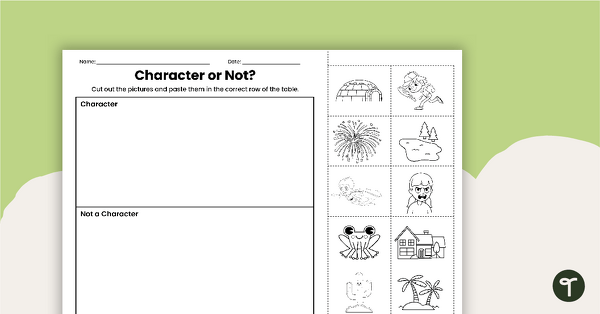
Character or Not? Cut and Paste Worksheet
Explore the difference between characters and non-characters with this cut-and-paste worksheet.
- Plus Plan
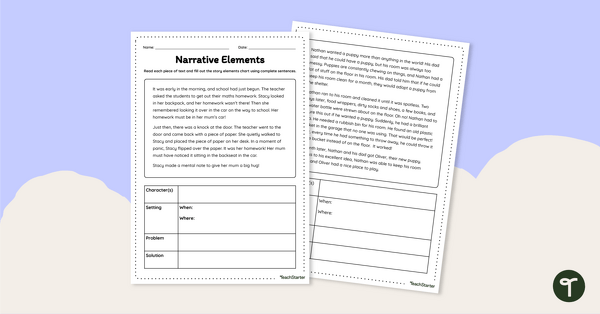
Narrative Elements - Worksheet
Practise identifying characters, settings, problems and solutions in fictional texts with this set of worksheets.
- Plus Plan
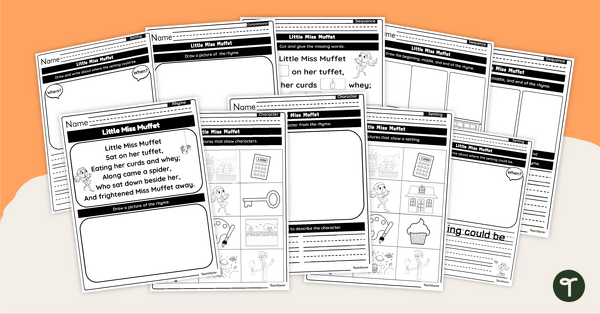
Little Miss Muffet - Story Elements Worksheet Pack
Identify characters, setting and parts of a story with early years reading worksheets featuring the Little Miss Muffet nursery rhyme.
- Plus Plan
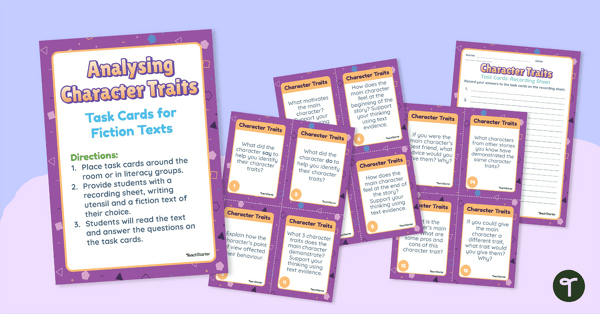
Character Analysis Task Cards
Get your students to perform a character analysis for any fictional character using this set of 20 task cards.
- Plus Plan
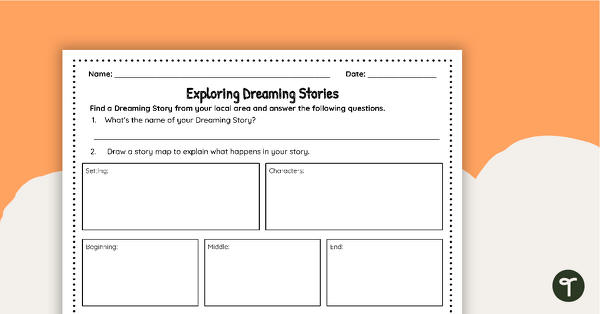
Explore a Dreaming Story – Worksheet
Use this template to explore First Nations’ Dreaming stories and unlock how they connect to Country.
- Plus Plan
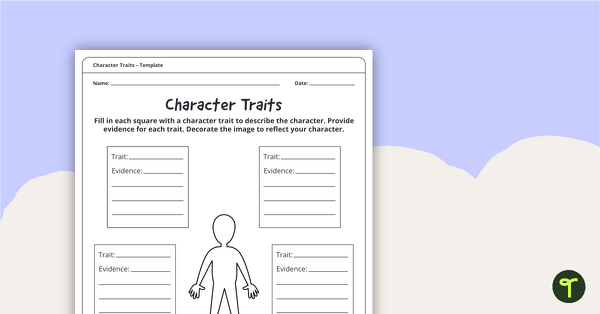
Character Traits Graphic Organiser
Describe the most notable mental and moral qualities of a real or fictional person.
- Plus Plan

Literature Task Cards
A set of 30 literature tasks to assist your students with examining and responding to literature.
- Plus Plan

Tiddalick the Frog Dreaming Story Sequencing Activity Cards
Use these Tiddalick the Frog sequencing activity cards as a resource for teaching Australian Dreaming Stories.
- Plus Plan
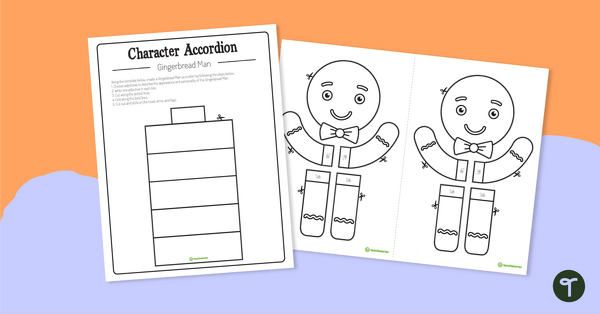
Character Adjective Concertina Template – The Gingerbread Man
Learn how adjectives can be used to describe a character's appearance and personality with a hands-on craft activity aligned to the English curriculum.
- Plus Plan
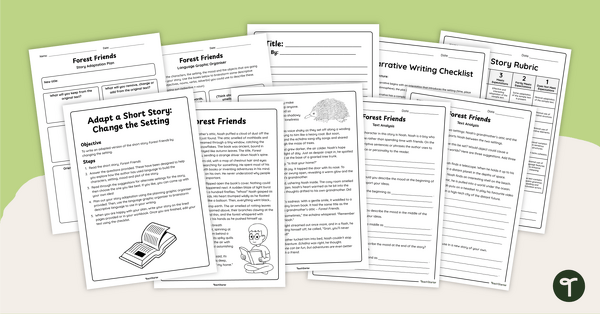
Adapt a Short Story – Change the Narrative Setting
Explore the role the narrative setting plays within a story with this engaging and fully scaffolded writing project booklet for primary students.
- Plus Plan
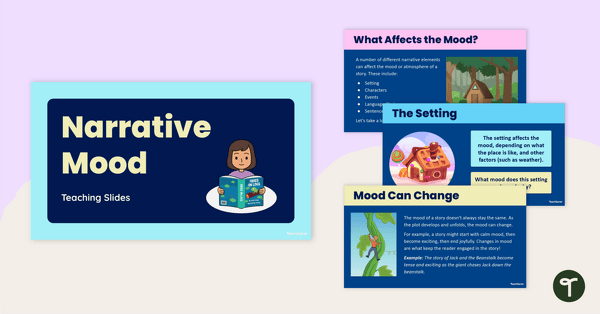
Narrative Mood Teaching Slides
Explore narrative mood with this interactive presentation that helps students understand what mood is, why it matters and how to create it in their own writing.
- Plus Plan
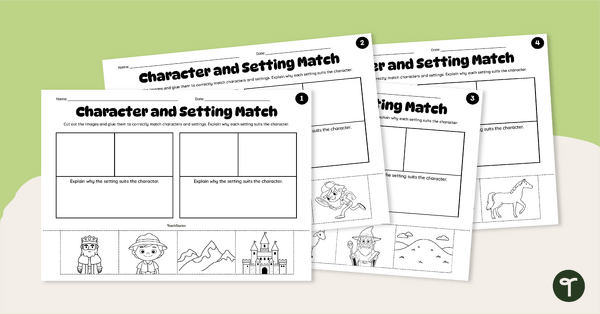
Character and Setting Connections Cut-and-Paste Pack
Explore the connection between characters and settings with this cut and paste activity pack.
- Plus Plan

What Is Narrative Voice? Teaching Slides
Answer the question “What is narrative voice?” with this engaging slide deck that helps students understand first person, third person limited and third person omniscient narration.
- Plus Plan

Narration and Point of View Worksheets
Use these narration and point of view comprehension passages to help students explore different narrative voices in literary texts.
- Plus Plan
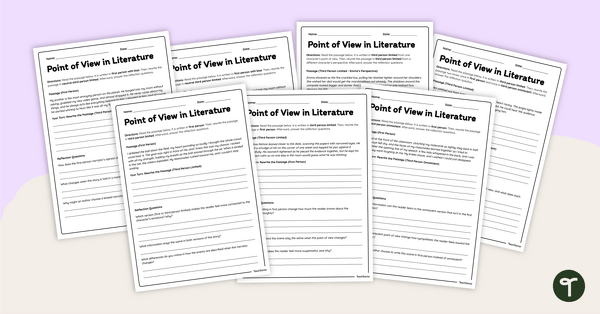
Voice in Narrative Writing Prompts
Explore voice in narrative with this set of engaging worksheets that require students to write literary passages in different points of view.
- Plus Plan
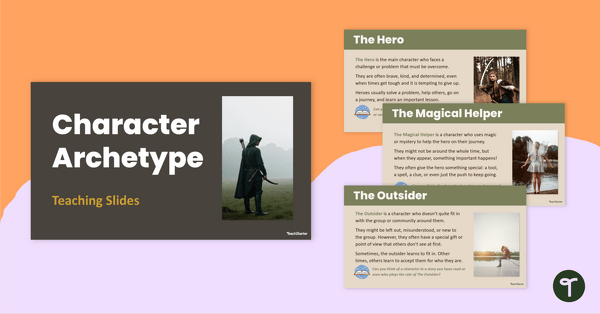
Character Archetype Teaching Slides
Download this character archetype slide deck to help your students identify and analyse common character types in literature.
- Plus Plan
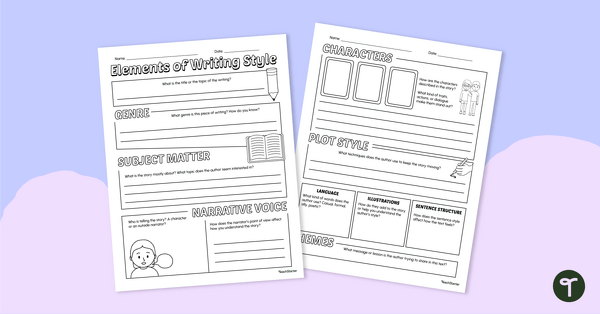
Writing Style Graphic Organiser
Get your class exploring writing style with this two-page graphic organiser, which enables students to track an author’s choices throughout a text.
- Plus Plan
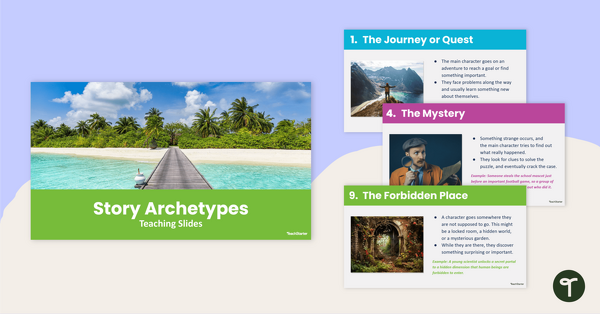
Story Archetypes Teaching Slides
Teach story archetypes with this engaging slide deck that introduces students to ten of the most common plot patterns in literature.
- Plus Plan

Author Style Teaching Slides
Teach your students about author style with this engaging slide deck that helps students understand the different elements that make up an author’s unique voice.
- Plus Plan
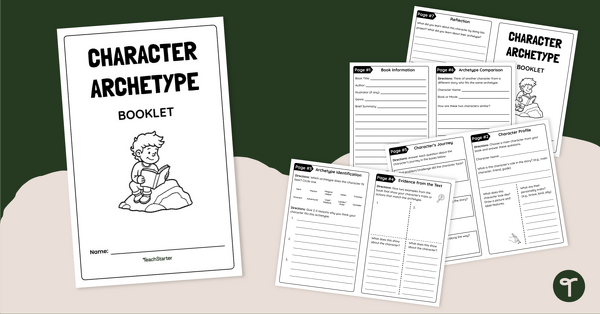
Archetype Characters Booklet
Explore archetype characters with this engaging 8-page mini book that helps students analyse a character from a book they have recently read.
- Plus Plan
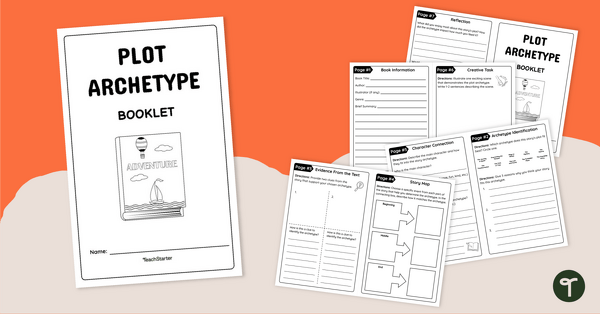
Plot Archetypes Booklet
Explore plot archetypes with this engaging 8-page mini book that helps students analyse familiar story structures.
- Plus Plan
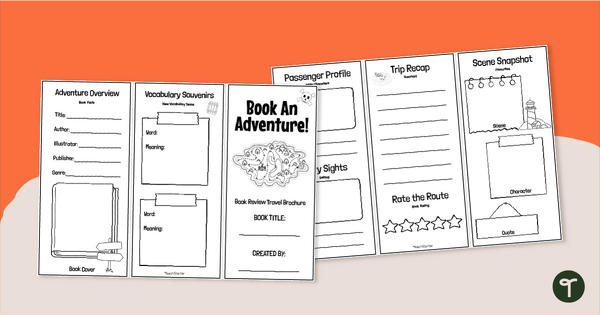
Book an Adventure Template - Brochure Book Review
Download a printable Book Week Template and create a fun book review travel brochure.
- Plus Plan

Book an Adventure Craft - Suitcase Book Review
Boost reading comprehension skills with a Book an Adventure Craft to engage young readers during Children’s Book Week.
- Plus Plan
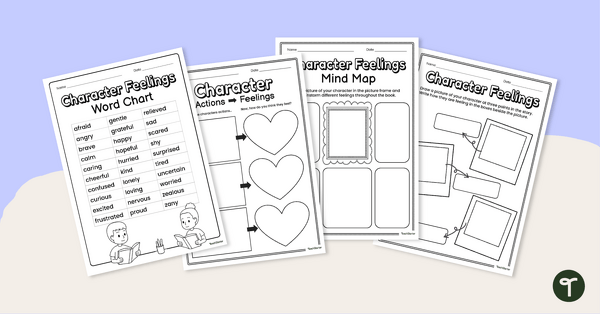
Character Emotions Chart and Worksheets
Explore character emotions in stories using this Character Emotions Chart and matching character Graphic Organisers
- Plus Plan
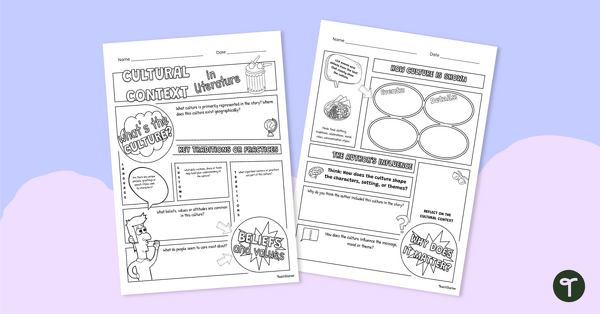
Cultural Context in Literature Graphic Organiser
Explore cultural context in literature with this two-page graphic organiser that helps students examine how cultural traditions, values and norms influence texts.
- Plus Plan
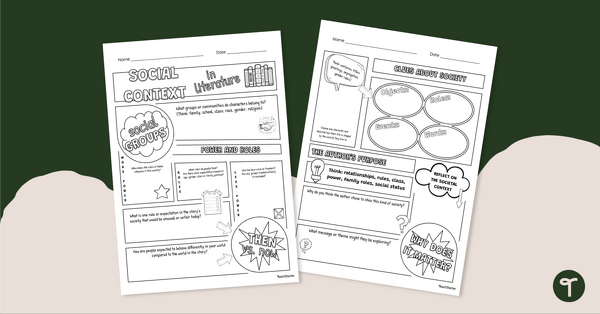
Social Context in Literature Graphic Organiser
Support students to explore social context in literature with this two-page graphic organiser that helps them explore societal norms in a piece of literature.
- Plus Plan
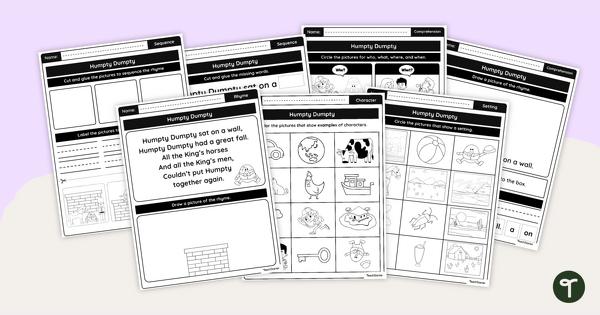
Narrative Features Worksheets - Humpty Dumpty
Identify characters, settings and parts of a story with early years reading worksheets featuring the Humpty Dumpty nursery rhyme.
- Plus Plan
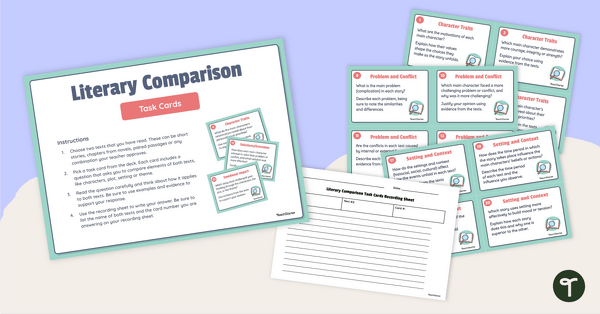
Literary Comparison Task Cards
Encourage deeper thinking through literary comparison with this engaging set of task cards designed to prompt meaningful analysis between two texts.
- Plus Plan
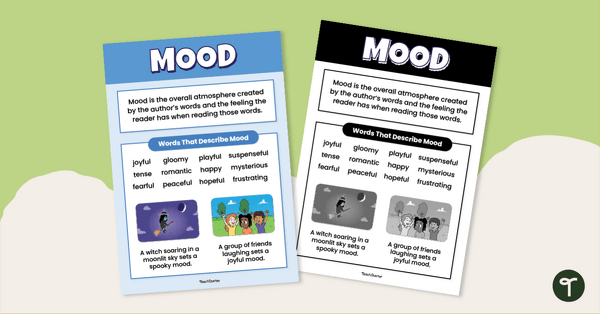
Mood Anchor Chart- Literary Element Poster
Introduce your students to mood, the atmosphere-creating literary element, with a printable Mood Anchor Chart.
- Plus Plan
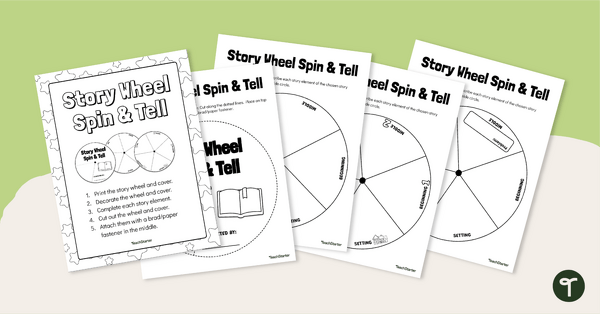
Basic Elements of a Story Spinner Template
Learn the basic elements of a story using this fun and engaging story spinner template for your students.
- Plus Plan
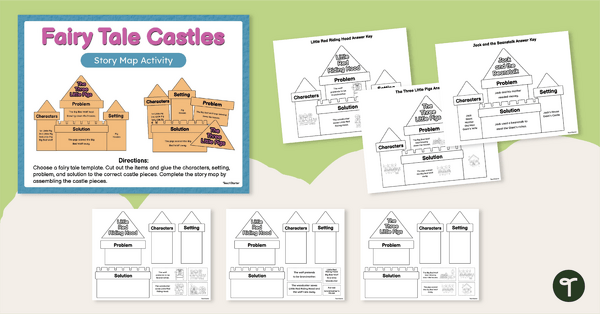
Narrative Elements Fairy Tale Sorting Activity
Explore narrative elements with this fairy tale sorting activity in the shape of a castle.
- Plus Plan
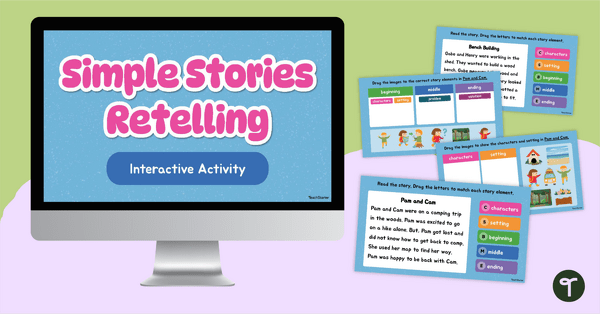
5 Elements of a Short Story Activity
Explore the 5 elements of a short story using this digital activity with five short stories.
- Narrative Elements Worksheets
- Narrative Elements Templates
- Narrative Elements Teaching Presentations
- Narrative Elements Games
- Narrative Elements Posters
- Narrative Elements for Foundation Year
- Narrative Elements for Year 1
- Narrative Elements for Year 2
- Narrative Elements for Year 3
- Narrative Elements for Year 4
- Narrative Elements for Year 5
- Narrative Elements for Year 6